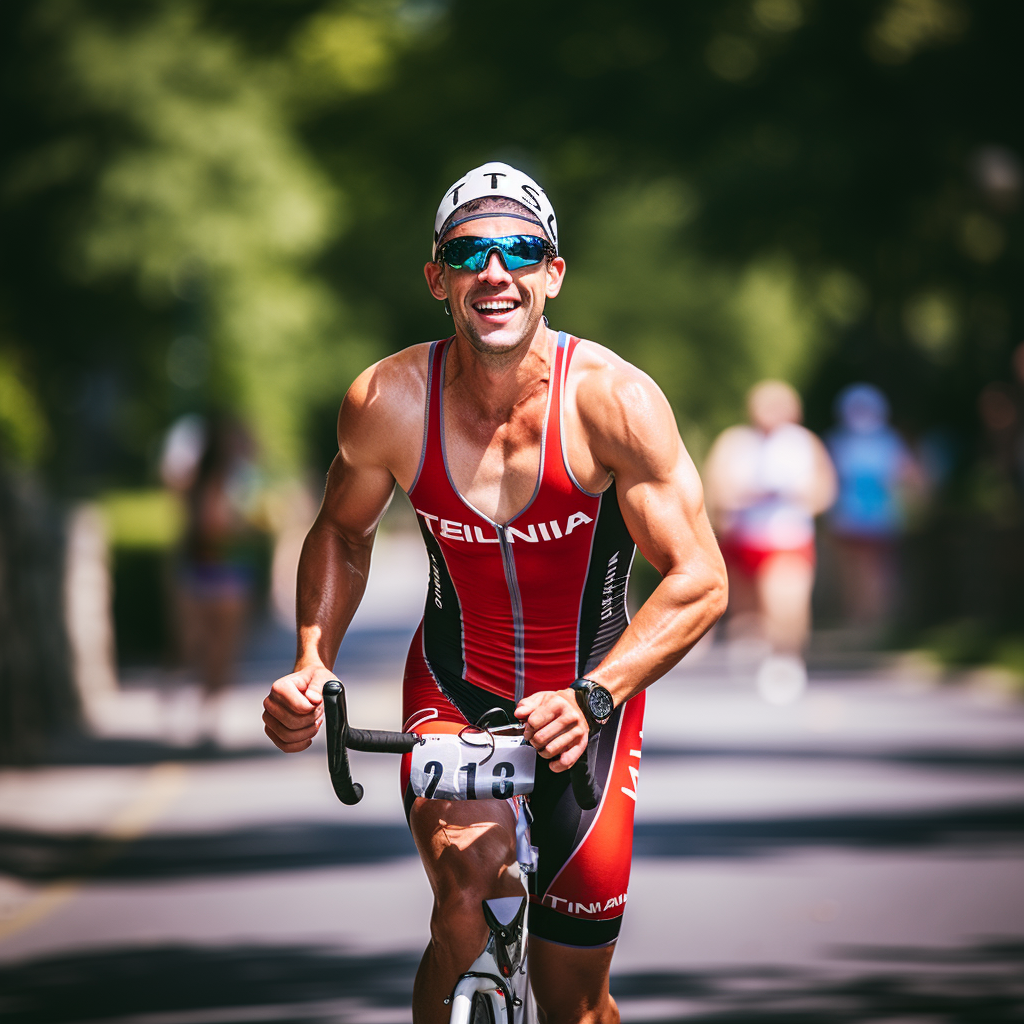Today, we’re tackling the exciting world of hybrid athleticism. Discover how combining cardiovascular endurance with muscular strength can revolutionize your physique and your fitness routine. Join us as we delve into some common misconceptions followed by some programs built for the hybrid athlete. It’s time to break free from one-dimensional routines and unlock your true potential…
Does Cardio Burn Muscle?
There has long been a debate about the effects of cardio on muscle mass. Many have wondered, “does cardio burn muscle?” So, let’s uncover the truth and put those worries to rest.
While it is true that intense cardiovascular activities, such as prolonged endurance running or cycling, can lead to a slight breakdown of muscle tissue, the overall impact on muscle mass depends on several factors. The type, duration, and intensity of cardio exercise, as well as the individual’s diet and recovery practices, play a significant role in determining the outcome.
Moderate-intensity cardio, such as running a few times per week, is unlikely to cause significant muscle loss. In fact, incorporating these activities into your fitness routine can promote overall cardiovascular health, stimulate muscle growth, and contribute to calorie burning.
On the other hand, excessive amounts of high-intensity cardio, particularly when coupled with inadequate nutrition or overtraining, may lead to muscle catabolism. This is why finding the right balance is key to reaping the benefits of cardiovascular exercise without sacrificing hard-earned muscle mass.
To optimize your results, consider implementing strategies like proper nutrition, adequate protein intake, and resistance training alongside your cardio sessions. This combination helps preserve muscle mass, support recovery, and maximize the effectiveness of your workouts.
Remember, being a hybrid athlete means finding harmony between cardiovascular endurance and muscular strength. By implementing a balanced approach and fine-tuning your training regimen, you can achieve the best of both worlds—improved cardiovascular fitness and maintained muscle mass.
What Does Running Do To Your Body?
Running offers a myriad of benefits that extend far beyond its calorie-burning reputation. Lace up your shoes and get ready to discover the transformative effects running can have on your body and overall well-being.
Cardiovascular Health: Running is an excellent way to strengthen your heart and improve cardiovascular fitness. As you engage in regular running sessions, your heart becomes more efficient at pumping blood, leading to increased oxygen delivery to your muscles and improved overall endurance. This cardiovascular adaptation can lower your risk of heart disease, lower blood pressure, and enhance your body’s ability to utilize oxygen.
Weight Management: Running is a potent calorie-burning activity that can help you achieve and maintain a healthy body weight. It elevates your heart rate, increasing your metabolic rate both during and after the run. Regular running sessions combined with a balanced diet can contribute to weight loss or weight maintenance, depending on your goals.
Bone and Joint Strength: Contrary to the misconception that running is detrimental to your joints, it can actually improve bone density and joint strength. Running is a weight-bearing exercise that stimulates the bones to adapt and become stronger. Over time, this can help reduce the risk of osteoporosis and promote overall skeletal health. However, it’s important to gradually increase your running intensity and ensure proper footwear to minimize the risk of injuries.
Mental Well-being: Running has powerful effects on mental health. It releases endorphins, the “feel-good” hormones, which can elevate mood, reduce stress, and combat symptoms of depression and anxiety. Running also provides an opportunity for solitude or social interaction, allowing you to clear your mind, boost creativity, and establish connections with fellow runners.
Muscular Strength and Endurance: Running primarily targets the lower body muscles, including the quadriceps, hamstrings, calves, and glutes. By consistently challenging these muscles through running, you can improve their strength, endurance, and overall tone. Additionally, running engages the core muscles for stability and balance, contributing to a stronger midsection.
Remember, running is a versatile activity that can be tailored to your fitness level and goals. Whether you’re aiming for long-distance running, interval training, or simply incorporating regular jogs into your routine, the benefits are plentiful.
Hybrid Athlete Training Program
Becoming a hybrid athlete is about embracing the synergy between cardiovascular endurance and muscular strength. It’s time to break away from the notion that you must choose one over the other. Let’s explore the key components of a successful hybrid athlete training program:
Balanced Workout Routine: Aim for a well-rounded training routine that combines cardiovascular exercises, strength training, and flexibility work. Dedicate specific days to each component, ensuring you allocate enough time for each aspect of your training. This balanced approach will help you develop overall fitness, prevent imbalances, and enhance your athletic performance.
Cardiovascular Endurance: Include various cardio exercises to improve your cardiovascular fitness. This can involve activities such as running, cycling, swimming, rowing, or high-intensity interval training (HIIT). Experiment with different modalities to keep your workouts engaging and challenging. Gradually increase the duration and intensity of your cardio sessions to build endurance over time.
Strength Training: Integrate resistance training exercises to build muscular strength and power. Focus on compound exercises that target multiple muscle groups, such as squats, deadlifts, lunges, push-ups, pull-ups, and overhead presses. Incorporate both bodyweight exercises and weightlifting to promote functional strength and overall muscle development. Remember to progressively overload your muscles by increasing weights or repetitions as you become stronger.
Flexibility and Mobility: Don’t neglect the importance of flexibility and mobility in your training program. Include dynamic warm-up exercises and dedicate time for stretching or yoga to improve your range of motion and prevent muscle imbalances. This will enhance your overall performance, reduce the risk of injuries, and promote faster recovery.
Remember, the key to being a successful hybrid athlete lies in finding the right balance between cardiovascular endurance and muscular strength. Tailor your training program to suit your goals, fitness level, and personal preferences. By following a well-structured hybrid athlete training program, you’ll be able to experience the extraordinary benefits of being a well-rounded and versatile athlete.
What is A Triathlon?
The world of hybrid athleticism reaches its pinnacle with the thrilling sport of triathlon. A triathlon is a multisport event that combines three disciplines: swimming, cycling, and running. It’s a true test of endurance, mental resilience, and versatility, attracting athletes from all walks of life. Let’s dive into the captivating world of triathlons and explore what makes them so exhilarating:
Swim: The triathlon begins with the swim leg, where participants navigate open water or pool distances that can vary based on the specific event. From calm lakes to choppy seas, swimmers must display efficient technique, stamina, and the ability to handle different water conditions. It’s essential to train not only for speed but also for open water skills like sighting and drafting.
Bike: Following the swim, athletes transition to the cycling leg, where they cover various distances on a bike. The bike leg showcases the importance of cardiovascular endurance and muscular power as participants navigate challenging terrains and varying elevations. Cyclists must master bike handling skills, optimize their pacing, and strategically conserve energy for the subsequent run.
Run: The final leg of the triathlon is the run, where athletes put their running prowess to the test. After swimming and cycling, the run requires mental fortitude and physical resilience. Participants must find their rhythm and push through fatigue to complete the race. Effective pacing, proper running form, and mental strategies play vital roles in achieving success during this leg.
Transitions: Transitions are a unique aspect of triathlons, where participants switch between the different disciplines. Efficient transitions can significantly impact overall race times. Athletes must practice transitioning smoothly from swim to bike (T1) and from bike to run (T2), optimizing their setup, equipment changes, and mental preparedness.
Triathlon Training Plan
Preparing for a triathlon requires a structured and comprehensive training plan that encompasses all three disciplines. Let’s explore the key components of a triathlon training plan:
Goal Setting: Start by setting clear and realistic goals for your triathlon. Determine the distance you’re aiming to complete and establish specific targets for each discipline. Having defined goals will help you structure your training plan effectively and track your progress along the way.
Periodization: Divide your training plan into distinct phases to optimize your progress and prevent overtraining. Typically, a triathlon training plan includes base training, where you build endurance and establish a solid foundation, followed by specific and race-specific training phases that focus on improving speed, intensity, and race-specific skills.
Training Volume and Frequency: Gradually increase your training volume, duration, and frequency over time to build fitness and adapt to the demands of each discipline. Aim for a balance between the three sports, allocating appropriate training time to swimming, cycling, and running based on your strengths and weaknesses. Include both individual discipline workouts and brick workouts that combine two disciplines to simulate race conditions.
Cross-Training and Strength Training: Incorporate cross-training activities, such as yoga, Pilates, or functional training, to improve flexibility, mobility, and overall body strength. Additionally, don’t overlook the importance of strength training to enhance muscular power, prevent injuries, and improve overall performance. Focus on exercises that target the muscles used in swimming, cycling, and running, while also prioritizing core and stability work.
Technique and Skill Development: Dedicate time to refine your technique and skills in each discipline. Seek guidance from coaches or experienced athletes to improve your swimming stroke, cycling efficiency, and running form. Incorporate drills, intervals, and specific workouts that address weaknesses and help you become more efficient and economical in each discipline.
Brick Workouts and Transitions: Brick workouts, which involve combining two disciplines back-to-back (e.g., cycling immediately followed by running), are essential to simulate race conditions and adapt to the unique demands of transitioning between sports. Practice smooth transitions, including changing gear, switching shoes, and mentally preparing to shift from one discipline to another efficiently.
Remember, every triathlete’s training plan should be tailored to their specific goals, fitness level, and available time. If possible, seek guidance from a certified triathlon coach who can provide personalized advice and help you navigate the intricacies of triathlon training.
Final Thoughts: Hybrid Athlete…
By embracing the perfect balance between cardiovascular endurance and muscular strength, you have the power to achieve big things in the world of fitness. Being a hybrid athlete is not just about physical prowess—it’s a mindset of versatility, resilience, and constant improvement.
Remember the core principles: balance, consistency, and adaptability. Strive for equilibrium, maintain a consistent training routine, and adapt to evolving goals and challenges. Tap into your true athletic potential and unlock extraordinary results.
Now, armed with the knowledge and inspiration from this blog post, take action. Believe in yourself, stay motivated, and let your journey inspire others. Unleash your inner hybrid athlete, surpass your limits, and embrace the extraordinary possibilities ahead!
To learn more, visit Train Fitness.
More Articles
Transformative Discipline: Exploring the Principles of 75 Hard
Recently, my friends and I were thinking of ways to start the new year positively, and 75 Hard will put us to the test in an effective way. Setting off on a path toward resilience and self-improvement frequently calls for more than just internal drive; it also calls...
The Best Full Body HIIT Workout You Can Do
Workouts involving full-body high-intensity interval training (HIIT) are a quick and easy approach to optimize your fitness progress. These workouts usually consist of a series of heart-pumping, intensive movements that target numerous muscle groups at once,...
Ab Workouts: Creating a Home Gym that Fits Your Lifestyle
Ab workouts are an important part of any fitness regimen because they target the core muscles that are crucial for stability, posture, and general strength. You can choose from a wide range of workouts to achieve a stronger core or a toned stomach. Engaging the...
Home Sweet Home Gym: Your Gateway to a Healthier Lifestyle
Picture this: no more rushing to the gym during peak hours, no waiting for your favorite machine, and no distractions from strangers. Instead, imagine a space where you can focus entirely on your fitness goals, set your workout schedule, and curate an environment that...
Mastering Back Exercises with Dumbbells
Dumbbell back workouts are a flexible and efficient way to improve your general strength, posture, and muscle growth. Dumbbells are a great addition to any exercise regimen, whether you're a back-health fanatic, an athlete, or just someone who enjoys working out....
The Fierce Flats
With our "Fierce Flat’s" blog, you'll be able to dive into the realm of lifting like never before. Forget about flashy kicks and high-tech soles; there's a new look in town. This blog will break down Converse and Vans' game-changing styles for all of your lifting...












